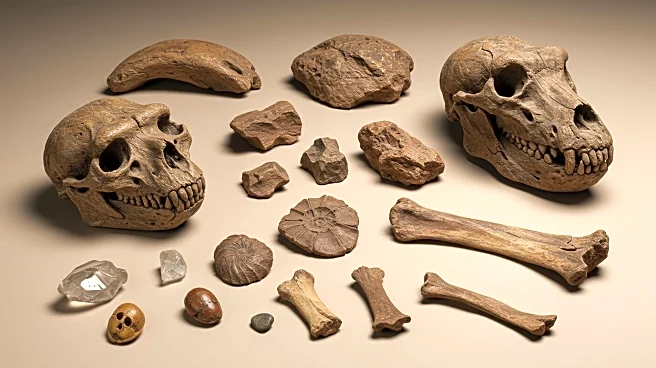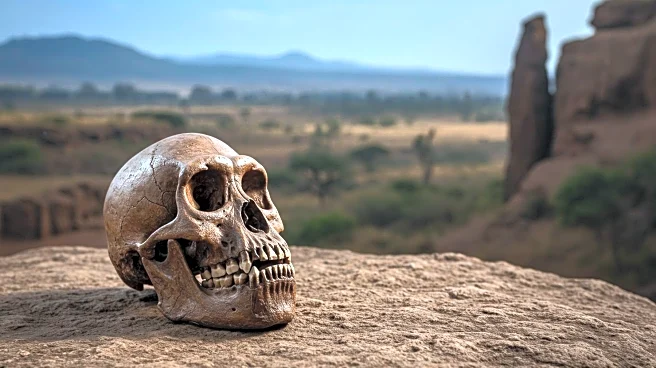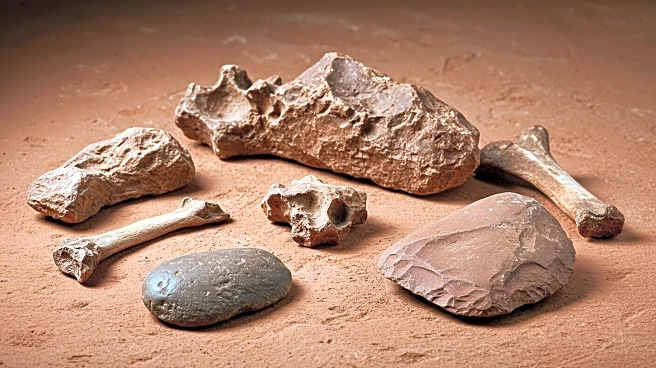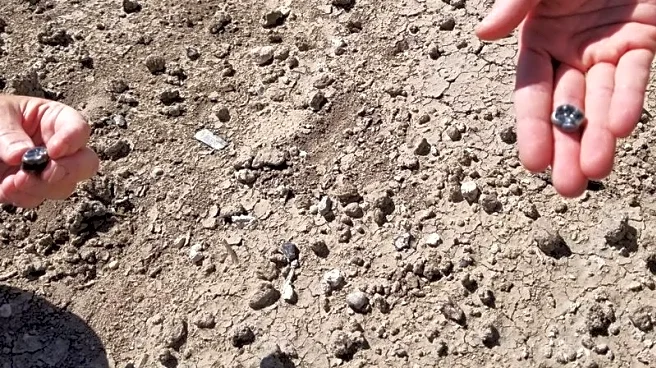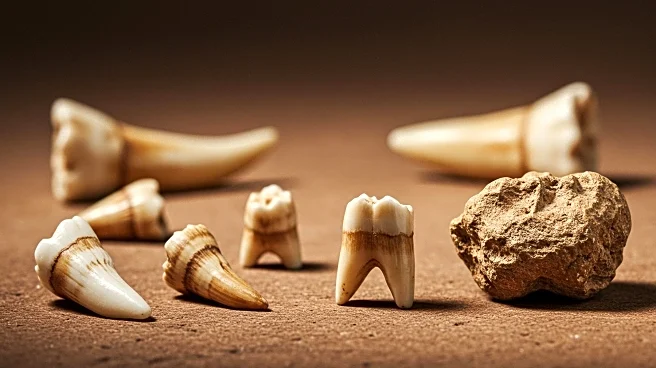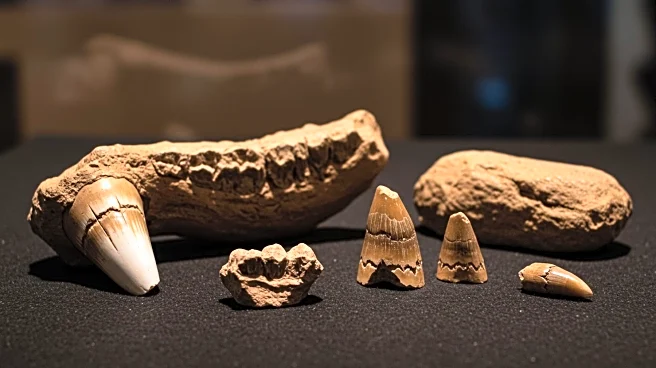What's Happening?
Archaeologists in Ethiopia have discovered fossilized teeth belonging to a previously unidentified species within the Australopithecus genus. These fossils, dating back 2.6 to 2.8 million years, suggest the existence of a new species that coexisted with early members of the genus Homo. The discovery was made at the Ledi-Geraru research project area, where other hominin specimens have been found. The findings, published in Nature, indicate that multiple early human-like lineages may have coexisted in East Africa during this period.
Why It's Important?
This discovery is crucial for understanding human evolution, as it challenges the linear progression model and suggests a more complex evolutionary tree with multiple coexisting species. The identification of a new species within the Australopithecus genus provides insights into the diversity and adaptability of early human ancestors. It also underscores the importance of continued archaeological research in uncovering the complexities of human evolution and the interactions between different hominin species.
What's Next?
Researchers will continue to analyze the enamel of the newly discovered teeth to determine the diet and ecological niche of this new species. Further fossil discoveries are needed to officially name the species and understand its role in the evolutionary timeline. The findings may prompt additional archaeological expeditions in the region to uncover more evidence of early human-like ancestors.
